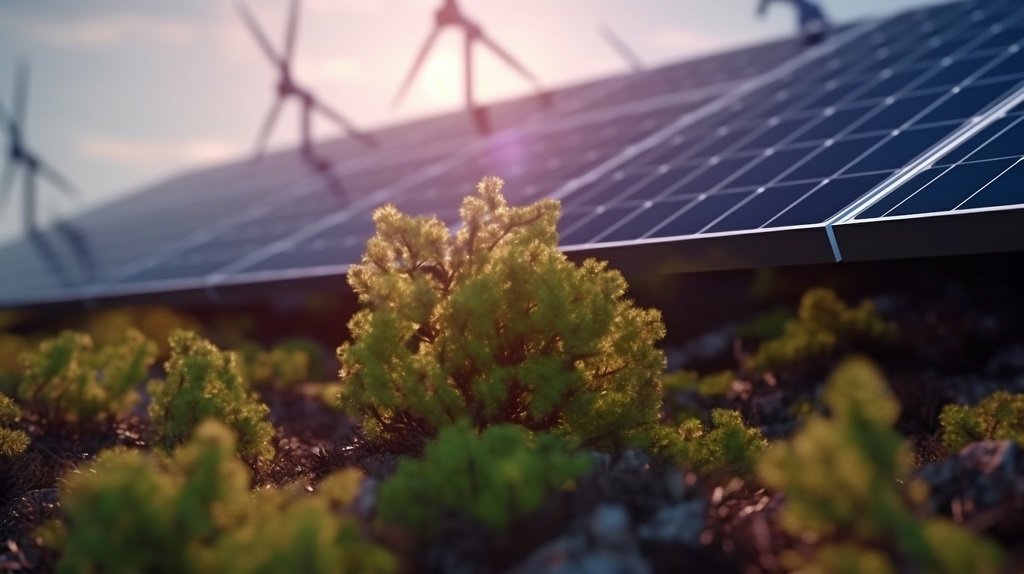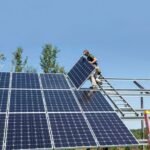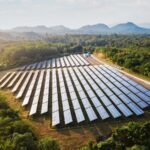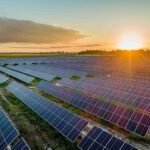In recent years, renewable energy has shifted from a noble goal to an urgent necessity—especially in developing economies where energy access remains inconsistent and underdeveloped. Yet while sunlight, wind, and other renewable resources are abundant, access to capital and project financing remains a significant roadblock. Companies like Steelbridge Export are helping bridge this gap by introducing smarter, more integrated financing models that don’t just make clean energy possible—they make it profitable and scalable.
In this article, we’ll explore how smart financing models are transforming renewable energy projects in developing countries, why traditional approaches often fall short, and how emerging strategies like EPCF (Engineering, Procurement, Construction, and Financing) are turning vision into reality.
The Challenge: Energy Demand Meets Financial Barriers
Developing economies are experiencing explosive growth in energy demand. Urbanization, industrialization, and population growth are all pushing existing energy infrastructure to its limits. At the same time, fossil fuel-based power systems are increasingly seen as unsustainable, expensive, and vulnerable to price fluctuations.
Despite this urgent need, many renewable energy projects struggle to get off the ground. Why? Because financing is complex and risky—especially in markets with political instability, currency volatility, and inconsistent regulatory frameworks.
Most traditional financing models require developers to piece together funding from multiple banks, investors, and agencies, each with their own requirements, timelines, and risk assessments. This fragmented approach often leads to delays, budget overruns, and project cancellations.
 The Rise of Smart Financing Models
The Rise of Smart Financing Models
Enter smart financing—a term that refers to innovative, integrated funding structures designed to reduce risk, streamline processes, and align financial incentives with project success. Smart financing doesn’t rely solely on one source of capital or one-size-fits-all deals. Instead, it uses a mix of tools, institutions, and partnerships to unlock energy development in the most efficient way possible.
Here’s how smart financing is changing the game in developing economies:
1. Blended Finance: Sharing the Risk
Blended finance involves combining public, philanthropic, or concessional capital with private investment. This model allows public funds or development banks to absorb the initial risk, making the project more attractive to commercial investors.
For instance, a renewable project in Kenya might receive early-stage funding from a climate-focused development fund, while private banks join later once the groundwork is laid and risks are lower. The result? Lower overall financing costs and improved investor confidence.
2. EPCF: One-Stop Shop for Financing and Execution
The EPCF model (Engineering, Procurement, Construction, and Financing) is rapidly becoming the go-to structure for clean energy development in challenging markets. It provides a turnkey solution where a single firm or consortium handles everything from design and equipment sourcing to construction and, crucially, financing.
Here’s why this matters:
Simplifies the Process: With one party accountable for the entire project, there’s no juggling between contractors, lenders, or suppliers. That means fewer delays and smoother execution.
Integrated Financing: EPCF providers often bring financing from export credit agencies or development banks, eliminating the need for developers to secure loans independently.
Aligned Incentives: When the same entity that builds the project also finances it, they’re motivated to deliver high-quality, on-time results—because their own returns depend on it.
In places where energy projects historically stall due to bureaucracy or underfunding, EPCF offers a breakthrough solution.
3. Pay-As-You-Go and Off-Grid Financing
In regions with poor grid infrastructure, traditional utility-scale projects might not be viable. That’s where off-grid solar and microgrid systems come in—and they often use a smart financing strategy called pay-as-you-go (PAYG).
With PAYG, consumers pay a small upfront fee for solar panels or home energy kits, then make daily or weekly payments via mobile money. This model eliminates the need for big capital investments by end-users and creates a steady revenue stream for providers.
From rural Uganda to remote parts of Bangladesh, PAYG solar has brought clean electricity to millions of homes—and it’s all made possible through flexible, user-friendly financing.
4. Green Bonds and Climate Funds
Green bonds have become a hot topic in international finance—and for good reason. These are debt instruments issued specifically to fund environmentally friendly projects, including renewable energy.
Governments and corporations alike are issuing green bonds to tap into the growing pool of climate-conscious investors. The proceeds often go toward solar, wind, hydro, and energy efficiency initiatives in underserved markets.
Likewise, climate funds such as the Green Climate Fund and Climate Investment Funds (CIF) are offering grants, loans, and guarantees to de-risk investments in low-income countries.
5. Power Purchase Agreements (PPAs) with Creditworthy Offtakers
A Power Purchase Agreement (PPA) is a long-term contract between an energy producer and a buyer—usually a utility or large business. Smart financing models use PPAs to secure predictable revenue, which makes it easier to obtain loans or attract equity.
In many developing economies, the risk comes not from generating electricity but from getting paid for it. That’s why innovative PPAs with credit enhancements—like partial risk guarantees from multilateral banks—are essential.
For example, a solar project in Nigeria might secure a PPA with a local utility backed by the World Bank’s guarantee arm. This reassures lenders and attracts funding that would otherwise be too risky.
 The Role of Local Banks and Financial Literacy
The Role of Local Banks and Financial Literacy
While international financing often gets the spotlight, local banks play a critical role in scaling renewable energy in developing regions. They understand the local context, speak the language, and have boots-on-the-ground relationships with regulators and stakeholders.
The challenge? Many local banks are unfamiliar with renewable energy project structures, and developers often lack the financial literacy to present bankable proposals.
That’s why capacity-building efforts are a core part of smart financing strategies. Development partners and NGOs are training local financial institutions on how to evaluate and support clean energy projects—creating a more sustainable, long-term financing ecosystem.
Digital Platforms and Fintech Innovations
Technology is also making renewable energy financing more inclusive and efficient.
Crowdfunding platforms are letting individuals invest directly in solar farms or wind projects, democratizing access to clean energy finance.
Blockchain technology is being tested to create transparent, tamper-proof records for carbon credits and energy trading.
AI-powered risk assessment tools are helping lenders evaluate off-grid energy projects in rural, data-scarce regions.
These tools are still evolving, but they’re already reducing transaction costs and speeding up decision-making.
Case Studies: Smart Financing in Action
1. East Africa: Mini-Grids through EPCF
In East Africa, a government-led initiative used the EPCF model to deploy 25 solar mini-grids across remote communities. By bundling engineering, construction, and financing in a single contract, they avoided the usual bureaucratic delays and completed the project under budget. Thousands of homes now have reliable, renewable electricity.
2. Latin America: Solar PPA + Green Bond
A 150 MW solar farm in Mexico was financed through a combination of a long-term PPA with a multinational company and a green bond issued by the project developer. The project reached financial close in record time and is now supplying clean energy at competitive rates.
Tips for Developers: How to Secure Smart Financing
If you’re a project developer looking to tap into smart financing, here are a few key tips:
Build Strong Partnerships: Team up with experienced EPCF firms or financiers who understand your region and project type.
Understand Your Risk Profile: Be honest about political, technical, and market risks—and have strategies in place to mitigate them.
Focus on Bankability: A technically brilliant project is useless if it’s not financially viable. Focus on cash flow, return on investment, and creditworthy offtakers.
Leverage Guarantees and Support Programs: Seek out grants, guarantees, and concessional finance from development partners.
Tell a Compelling Story: Lenders and investors aren’t just buying into numbers—they’re buying into your vision. Show how your project will transform lives and communities.
more to read: Site Assessment and Design Best Practices in EPCF Solar Engineering
The Future: Smarter, Faster, Greener
Smart financing is not just about money—it’s about vision, collaboration, and innovation. For renewable energy to scale in developing economies, we need financing models that match the complexity and ambition of the challenge.
With the right structures—like EPCF, blended finance, and digital platforms—we can cut through the red tape, reduce risk, and bring clean power to millions who need it most.
As more stakeholders come together and tools become more sophisticated, the possibilities are endless. And platforms like epc.com are helping make this vision a global reality—one smartly financed project at a time.
FAQs: Smart Financing Models for Renewable Energy in Developing Economies
- 1. What challenges do renewable energy projects face in developing countries regarding financing?
Projects often encounter fragmented funding sources, political instability, currency volatility, and inconsistent regulations, leading to delays and increased risk. - 2. How does the EPCF model simplify renewable energy project financing and execution?
EPCF combines engineering, procurement, construction, and financing under one contract, streamlining processes, reducing risks, and aligning incentives for timely, quality delivery. - 3. What role does blended finance play in advancing clean energy projects?
Blended finance mixes concessional public funds with private investment, mitigating early-stage risks and attracting commercial capital to otherwise risky markets. - 4. How do Power Purchase Agreements (PPAs) improve project bankability?
PPAs secure long-term revenue streams, often enhanced with credit guarantees, reducing payment risk and making projects more attractive to lenders and investors. - 5. Why is capacity-building important for local banks in supporting renewable energy finance?
Training local banks improves their ability to evaluate and fund renewable projects, fostering a sustainable financing ecosystem adapted to regional contexts.




 The Rise of Smart Financing Models
The Rise of Smart Financing Models The Role of Local Banks and Financial Literacy
The Role of Local Banks and Financial Literacy




1 Comment
[…] related articles: Smart Financing for Renewable Energy Projects in Developing Economies […]